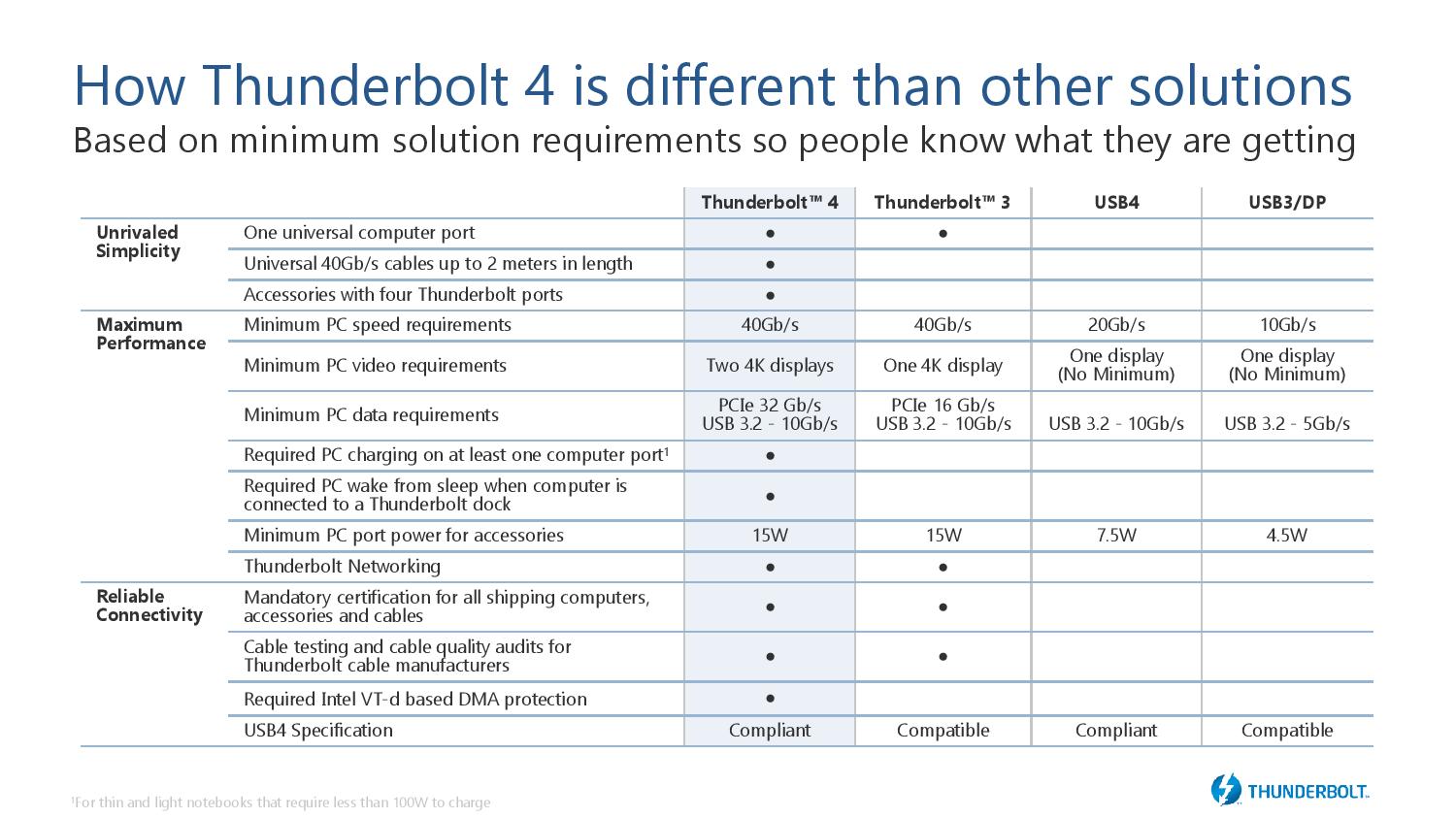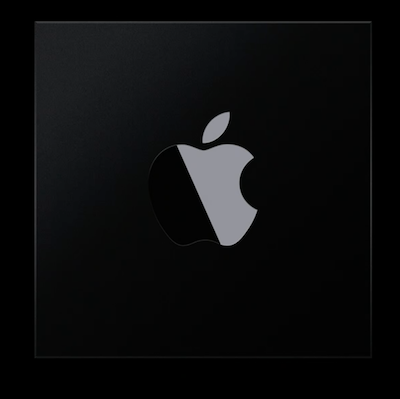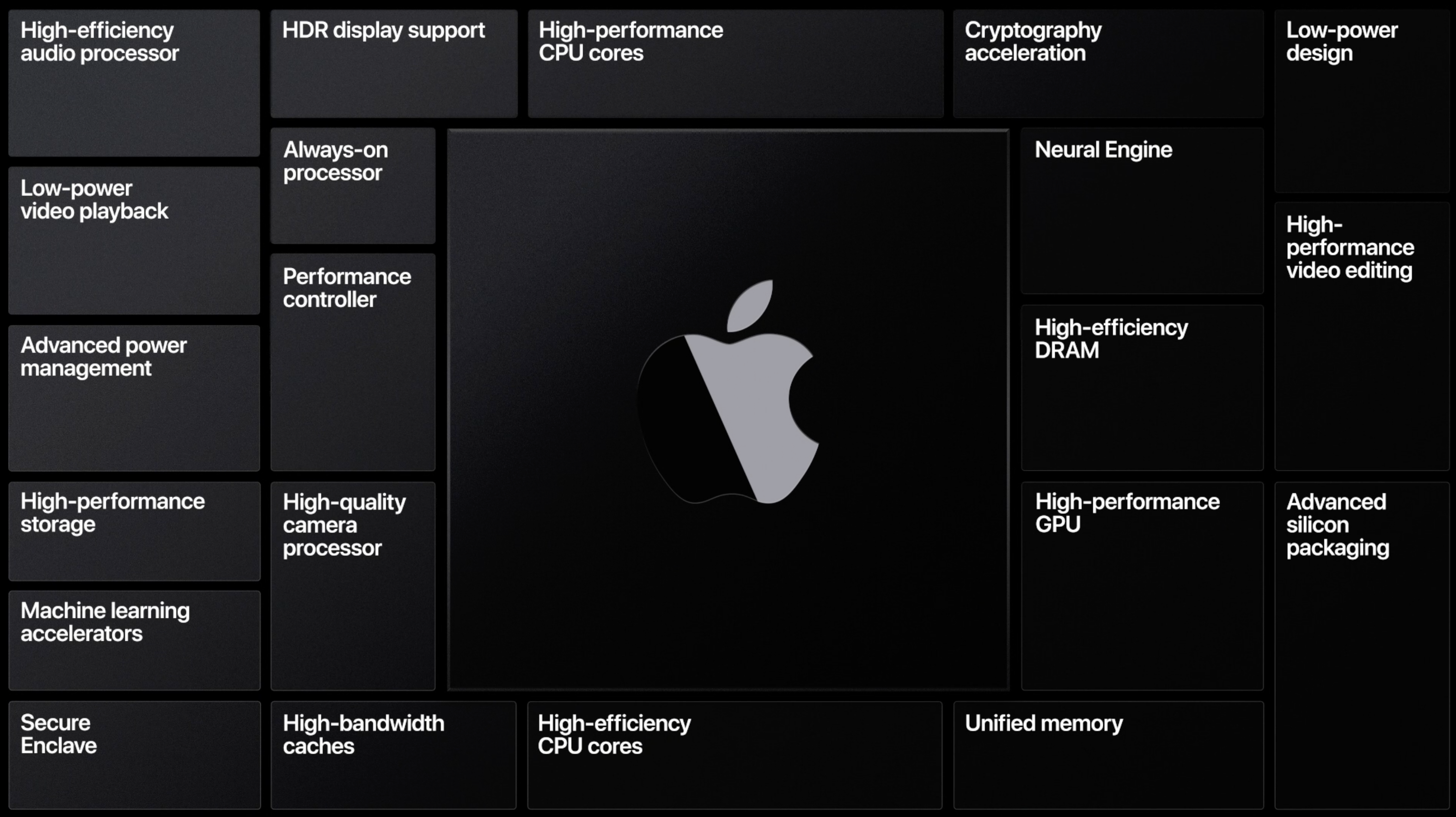mdriftmeyer
About
- Username
- mdriftmeyer
- Joined
- Visits
- 234
- Last Active
- Roles
- member
- Points
- 2,949
- Badges
- 2
- Posts
- 7,503
Reactions
-
Intel details Thunderbolt 4 spec, but 'Apple silicon' support is unclear [u]
tht said:
It's 32 gigabit per second, not gigabyte. All they are doing for "TB4" certification is to have minimum support of 32 gigabit/sec data bandwidth. In TB3, it was a 16 gigabit/sec minimum. Apple already supports 32 gigabit per second on all of their TB3 Macs. They already support Intel's DMA virtualization. They already support 2 4K monitors or 1 5K or 6K monitor per TB3 bus. The PC speed bandwidth is the same at 40 gigabit per second for both TB3 and TB4. This only requires x4 lanes of PCIe 3.mdriftmeyer said:
It’s right there in the spectht said:This news is a nothingburger for Apple? No new functionality in TB4 for Apple devices as far as I can tell:
So, it essentially brings TB capability for PC to Apple Mac levels, almost? 5K monitor support is spotty in the PC world.
Required Intel VT-d based DMA protection.In the Audio world Thunderbolt is in all professional Audio Interface hardware, as well as Ethernet via Dante spec in the likes of Apogee Digital, Universal Audio, Focusrite Red, etc. TB 2 & 3 are big for low latency DMA over PCIe and critical as USB doesn’t have that, period.
The PCIe 32GB/s means PCIe 4.0 as a minimum. No problem as by the time Apple Silicon on Mac Pro arrives they’ll be PCIe 5.0 based motherboards.
https://newsroom.intel.com/news/introducing-thunderbolt-4-universal-cable-connectivity-everyone/#gs.aasuc3
When It Is Available: Later this year, Intel expects to deliver the new Thunderbolt 4 controller 8000 series, including:- JHL8540 and JHL8340 host controllers for computer makers.
- JHL8440 device controller for accessory makers.
The first computers and accessories with Thunderbolt 4 ports are also expected to be available this year, including laptops based on Intel’s innovation program code-named “Project Athena.”
Apple will include one of those host controllers on their Apple Silicon based Mac motherboards just like AMD OEMs will do to offer TB4 on their motherboards.
As far as I can tell, the only new thing is accessories can have 4 TB ports.
Right. My error in bit vs. byte, and yes the minimum requirement is PCIe 3.0 bandwidth. In practical application, that means PCIe 4.0 as no Vendor will be producing PCIe 3.0 motherboards any longer, including Apple with Apple Silicon.

-
Intel details Thunderbolt 4 spec, but 'Apple silicon' support is unclear [u]
It’s right there in the spectht said:This news is a nothingburger for Apple? No new functionality in TB4 for Apple devices as far as I can tell:
So, it essentially brings TB capability for PC to Apple Mac levels, almost? 5K monitor support is spotty in the PC world.
Required Intel VT-d based DMA protection.In the Audio world Thunderbolt is in all professional Audio Interface hardware, as well as Ethernet via Dante spec in the likes of Apogee Digital, Universal Audio, Focusrite Red, etc. TB 2 & 3 are big for low latency DMA over PCIe and critical as USB doesn’t have that, period.
The PCIe 32GB/s means PCIe 4.0 as a minimum. No problem as by the time Apple Silicon on Mac Pro arrives they’ll be PCIe 5.0 based motherboards.
https://newsroom.intel.com/news/introducing-thunderbolt-4-universal-cable-connectivity-everyone/#gs.aasuc3When It Is Available: Later this year, Intel expects to deliver the new Thunderbolt 4 controller 8000 series, including:
- JHL8540 and JHL8340 host controllers for computer makers.
- JHL8440 device controller for accessory makers.
The first computers and accessories with Thunderbolt 4 ports are also expected to be available this year, including laptops based on Intel’s innovation program code-named “Project Athena.”
Apple will include one of those host controllers on their Apple Silicon based Mac motherboards just like AMD OEMs will do to offer TB4 on their motherboards.




-
Apple Silicon Mac mini dev kit looks like a desktop iPad Pro
Apple will be heavily limited in designs for GPUs due to the minefield of patents by AMD and Nvidia. There is a reason even Apple patents every aspect of their research. The lead time of all said advancements requires licensing and ImgTec doesn't hold a fraction of the IP that AMD and Nvidia owns.melgross said:
I certainly hope that on a high performance Mac, the gpu will NOT share RAM with the rest of the SoC. Shared RAM is always going to be slower than graphics RAM. It’s not just a faster version of regular RAM. It’s different.rob53 said:After watching the WWDC video "Explore the New System Architecture of Apple Silicon Macs" I'm beginning to understand just how powerful the A-series SOCs really are and how the will change the way Macs work in the future. The graphic showing multiple components in an Intel-based Mac while everything is on a SOC (not sure about all RAM) demonstrates how the AS SOC can run faster and more efficiently than the Intel configuration. Graphic is over-simplistic but AS SOC uses the same memory for both the CPU and GPU. No more having to worry about specifying a GPU with more memory since its able to use as much shared-memory as it needs. The video didn't mention PCIe memory in regards to the AS drawing, it uses whatever internal memory bus the SOC has. I don't know how the SOC will connect to external devices like SSDs, (probably?) RAM, and all I/Os but the more information that comes out about the AS Mac the more it looks like it's going to be much more powerful than Intel Macs.
As for discrete GPUs with their huge heatsinks, I wonder how many GPUs Apple will be able to add to their SOC and whether they will create specialized GPU-only "SOCs" that work with the main CPU SOC over some kind of ultra fast bus. When I look at a traditional slot-mounted GPU, I see a reasonable size GPU chip with a lot of other electronic components all hidden by a heatsink the size of a Mac mini (just joking but not by much). I'm sure the GPU manufacturer is overclocking the GPU, creating enough heat to heat a small house and definitely your office. Will Apple be able to create a GPU with the same number of cores as something like the high end Nvidia TITAN RTX with 4608:288:96:576:72 (72) (6) cores (That's Main Shader Processors : Texture Mapping Units : Render Output Units : Tensor Cores (or FP16 Cores in GeForce 16 series) : Ray-tracing Cores (Streaming Multiprocessors) (Graphics Processing Clusters)) without needing a refrigerator to cool it?

What incentive does Nvidia and AMD have to license that IP to Apple?
-
Rosetta 2 lacks support for x86 virtualization, Boot Camp not an Apple Silicon option [u]
Microsoft was smart to embrace the Linux community and is adding the base run-time to Windows allowing for a more seamless communication and leveraging the benefits of Linux inside Windows.mjtomlin said:So we’ll be back to WIntel emulation. Will be interesting to see what types of performance these types of applications can pull off.tjwolf said:Ok, I don’t get it. I watched the keynote and could have sworn that I saw Parallels Desktop being run on their ARM Mac to show Linux running...or did I imagine that?
That was a beta version of Parallels recompiled for Apple Silicon, runnning an ARM-based version of Linux.
Name me these industry standard applications that are platform agnostic. I'm looking forward to these Digital Audio Workstation platforms that just run on any OS and perform at the same level as native applications for the consumer.RoyTyrell said:Disappointing but predictable. Given the ubiquity of “cloud” or platform agnostic apps - maybe not a big deal.
Still, I see a big impact on development for Microsoft Office AddIns that were previously cross-platform. Not to mention the AI accelerators just now being natively integrated in Excel. I don’t see how that gets ported to Apples hardware.
Native apps are still a huge and important market. Some things just cannot be ported to a web interface economically or with appropriate security (see: Autodesk and every other engineering design platform)
As massive and powerful as Apple is - it simply cannot compete with the wintel software world and that has always been its achilles heal. The only exception being Adobe.
Hell, even when we had hundreds of networked systems at NeXT or Apple running globally and all NeXT or Cocoa apps at Apple custom made for internal use only stored in some /LocalApps, /SharedApps, as one copy it was because the dynamic runtime was the same used across all these applications for NeXTSTEP/OS X and we launched them locally into RAM to run that x86, m68, HP-PA RISC, SPARC native executable which had the full accompanied set of frameworks and runtimes necessary to do so on every copy of NeXTSTEP.
Later we created bundles for people to use separate that required all customized frameworks separate from that ubiquitous set [or so we called them as it was the same on NeXTSTEP] as the app wrapper was a series of folders with all custom frameworks and their versioning dynamically messaging against the same base frameworks all OS X systems received, out of the box.
The amount of good stuff that got ripped out of unreleased copies of OpenStep/NeXTSTEP to appease the old Mac devs that later because OS X like all the advanced network featured applications, to system-wide custom tools, never mind the hundreds of in-house apps we used daily that not one became a third party application still has me wonder why people never questioned Steve's vision but don't shut up about Tim's vision.
I'll never forget the day he returned as iCEO and begged everyone at NeXT to stay and talked about how Apple was going to become an Enterprise Player with 32 core server systems, blah, blah, blah. One month later it was all iMac.
Tim has a longer term vision strategy approach because he can now that the company has maximized Steve's visions. If people think this new vision is going to change the computer industry they don't realize that Apple has no plans for it to do just that. They won't be the Intel and Microsoft of Computing in One. They will do what they've always done and that is maximize profit potentials in a few select markets while slowly investing in several others until about year five it becomes clear it's not longer a small market but a big market and keep adding to their overall stock pile of cash, slowly talking about Medical will be the biggest legacy, yet so far in the past five Apple Watches it appears they have a long way to go before anything new will arrive.
And it won't be because of Apple Silicon. It will have to come from redesigning the entire US Health Care Industry for that to happen. And that won't happen without Congress, thus the heavy federal lobbying on both sides of the aisle to get little victories from time to time.
Everything that Apple adds to these Processors will also be in AMD and Intel based products within the next three to five years, and at levels that impact HPC, Data Centers, etc backends on a global scale. Apple Silicon isn't promoting ARM, it's just leveraging ARM to promote vector based processing from in-house designs. They aren't doing anything that AMD and Intel, not to mention Nvidia and others are currently all developing.
That's not what will grow Apple's footprint. Useful and ubiquitous service Original Content productions will raise them above their competition. That means News+ AppleTV+, Music, HomeKit and its future vision(s), Electric Vehicle technologies and/or actual vehicles, etc.
Developing a future Solar Cell panel that more closely mimics Photosynthesis thanks to the many areas of chemistry Apple has investments in would be a big future growth play. Developing Power Distribution systems would be an even bigger play. Your corporation can be all renewable but being able to develop affordable and scalable renewable solutions would be monstrous.
Killing your platform for a few years while expecting Intel based systems to address Professional Market demands is something they should be straight up front about.


-
Apple unveils plans to ditch Intel chips in Macs for 'Apple Silicon'
They demoed 1080p 60fps low settings and most of the acceleration was coming from the Afterburner integrated components they failed to mention on that motherboard. They mentioned no specs, completely unlike Apple. They showed the barest of stuff working, including that pathetic Maya demo of a wireframe and low graphic non-textured edit view.fastasleep said:I’m amazed they demoed Maya (and gaming) using Rosetta 2. I’m going to guess that 3D/animation apps are all going to be needing to be on Metal already in order to work in Rosetta (or at least work well?) but I’m beyond excited for this!
Guess we’ll be waiting to see the new iMac, wonder when that’ll launch.
Just take a look at what is on the upcoming Motherboard. Most of the heavy lifting will come from the Afterburner parts and not the CPU/GPU SoC.
All those specific processors/accelerators are FPGA based. High efficiency audio processor, Cryptography Acceleration, High-performance video editing, Machine Learning accelerators, High quality camera processor, Neural Engine. These are parts of the SoC. These are add-ons that you can't put in a smartphone or an iPad due to the massive batteries in the way. This stuff is bits and pieces on the Motherboard that compensate for the SoC being weak overall.
You put each one of those in an Intel or especially an AMD system with the Zen 3 and it's 64 core/128 thread max for consumers and you have something that nothing Apple does will ever compete. Apple is doing this to increase their profit margins and further stream line contractual agreements with third parties by no longer being contractually obligated for x amount of years with this or that vendor.
Apple will save the fully loaded system specs shown below for their most expensive variety of system and reduce the components down to their entry level machines. Profit margins will increase along with prices.
The most annoying oblique reference is `Advanced silicon packaging.' The industry leader in advanced Silicon Packaging is the Zen line. The Zen 4 is introducing X3D packaging (2.5D & 3D packaging] for their SoC APUs and CPUs. It's obvious that AMD will be soon move to APUs only with Infinity Architecture shared backplane allowing for GPUs to share the same bandwidth/memory. Zen 2 APUs already have lower power design than Intel.
Zen 3 drops down considerably further. AMD and Apple will be on 5nm and below at the same time.
Nothing Apple is doing is for lack of options.

